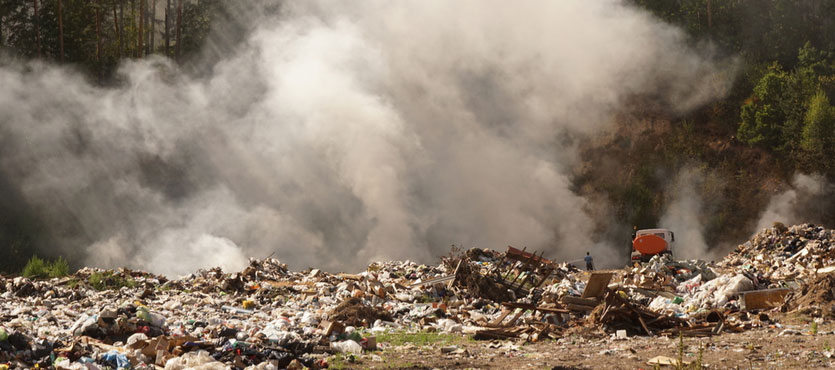Largely in response to an administrative law judge’s landmark decision, a Florida lawmaker plans to introduce a bill forcing the Department of Veterans Affairs to cover burn pit injuries sustained in Iraq and Afghanistan.
Rep. Gus Bilirakis (R-FL) plans to present a bill to the House Veterans Affairs Committee that would require the VA to presume that burn pits in Southwest Asia caused certain respiratory illnesses. The measure is very much like the Agent Orange law, which enabled Vietnam War-era victims to obtain compensation for serious illnesses related to the toxic exposure. Rep. Bilirakin, who is vice-chairman of the Veterans Affairs Committee, said the Department of Labor’s decision contributed directly to this legislation. “We are hopeful that the recent court ruling will help strengthen the Congressman’s position that this is an issue that warrants immediate attention,” he said through a spokesperson. “Veterans cannot afford to wait,” he added.
Local advocates applauded the move. Retired Navy P.O. Lauren Price, who lives in the Tampa area, said the proposed bill “has been years in the making and is designed to bring real solutions to those service-members and veterans who suffer from ailments after being exposed to open-air burn pits in combat zones.” P.O. Price was forced to retire after the DoD denied her respiratory illness claim. She now operates Veteran Warriors, a local nonprofit.
A burn pit lawsuit is currently pending against Kellogg Brown Root, which operated most of these Southwest Asia waste dumps. In a statement, KBR said that “The government’s best scientific and expert opinions have repeatedly concluded there is no link between any long term health issues and burn pit emissions.”
Burn Pits in Southwest Asia
As American and coalition forces rapidly built up in the early 2000s, lack of infrastructure soon became a serious problem. Waste disposal, in particular, was a serious issue. All kinds of waste, from human excrement to ordinary garbage to vehicle parts to medical waste, quickly piled up. Something had to be done to get rid of it, and military procedures did approve of burn pits as emergency stopgap measures.
Unfortunately for veterans, that emergency stopgap turned into a permanent solution. As the fires raged inside these open pits 24/7/365, they blanketed the area with thick, toxic smoke. KBR contractors were especially at risk because these individuals bore most of the responsibility for maintaining these pits. Rather understandably, military commanders wanted their soldiers to stay as far away from these pits as possible.
The Serious Injury Link
However, according to the 2006 internal memo that may have started it all, avoiding the area may have been insufficient to avoid serious respiratory illness. Sometime in 2006, Army brass asked Lt. Col. Darrin Curtis to assess the potential danger of the massive burn pit at Joint Base Balad. As Lt. Col. Curtis looked into the matter, it soon became apparent that JBB was nicknamed “Camp Anaconda” for a very good reason.
His report classified the burn pit as “an environmental health hazard.” He identified a vast array of toxins in the smoke, including acetaldehyde, arsenic, carbon dioxide, benzene, hydrogen cyanide, formaldehyde, sulfuric acid, and various heavy metals. Lt. Col. Curtis further bemoaned the fact that “engineering controls are not currently in place,” mostly because of budgetary restraints. In sum, the burn pit was an “acute health hazard” with the potential to create “chronic health hazards.”
Aeromedical Services Chief Lt. Col. James Elliot countersigned the report, adding that “the known carcinogens and respiratory sensitizers released into the atmosphere by the burn pit present both an acute and a chronic health hazard to our troops and the local population.” In other words, people near the pits were not the only ones at risk. Anyone who happened to be downwind was likely to get sick, as well.
In 2017, a group of doctors suggested that the VA create a new illness: Iraq/Afghanistan War-Lung Injury. IAW-LI would apply to the large number of returning veterans with either asthma or a more serious lung disease like bronchitis. While doctors said that both burn pits and sandstorms were to blame for this condition, many people contracted lung diseases in mountainous areas that were only near burn pits. Mosul, which was the setting for the aforementioned Labor Department claim, is one such example.
Compensation Available
Whether or not the VA chooses to cover burn pit-related illnesses is of little concern to military contractors. The Defense Base Act is the controlling legislation in this area. Its benefits pay both lost wages and medical expenses for private military contractors who were injured in an overseas war zone. The contractor could have worked for the U.S. government or perhaps even a sympathetic foreign government. Furthermore, for DBA purposes, a “war zone” is any foreign country that has at least one U.S. military installation of any size or character.
In addition to generous financial benefits, the DBA accepts all conditions, even if pre-existing, as long as there is medical evidence that the condition was caused, or if pre-existing, aggravated or the need for care accelerated by the work environment.
This same analysis applies to other pre-existing conditions. If a contractor has a bad knee that repetitive motion exacerbates, the DBA covers all medical bills and pays the full measure of lost wages.
Contact Barnett, Lerner, Karsen & Frankel, P.A. for more information about DBA benefits and procedures.

